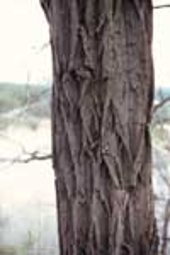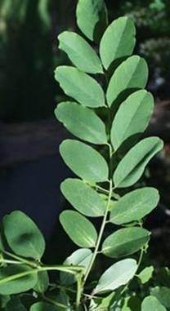
 3
3




 1
1




 1
1




There is nothing permanent in a culture dependent on such temporaries as civilization.
www.feralfarmagroforestry.com
 1
1




 1
1








Western Washington (Zone 7B - temperate maritime)





Help support my homestead by checking out the "Health and Garden/ The Essential Herbal Magazine" on our blog: www.MissouriHerbs.com




Western Washington (Zone 7B - temperate maritime)




Help support my homestead by checking out the "Health and Garden/ The Essential Herbal Magazine" on our blog: www.MissouriHerbs.com




permaguy wrote:
Great fodder for rabbits :
http://ojs.upv.es/index.php/wrs/article/view/332/319
.




Western Washington (Zone 7B - temperate maritime)




maikeru wrote:
Good to know. I'm trying to compile a list of what animals thrive and don't thrive on black locust.
Mmm, tire popper? I'll remember that...<evil laugh>.





PermForLife wrote:
Anybody know the pros and cons of the THORNLESS HONEYLOCUST (Gleditsia tricanthos inermis) versus BLACK LOCUST (Robinia pseudoacacia)?
















Help support my homestead by checking out the "Health and Garden/ The Essential Herbal Magazine" on our blog: www.MissouriHerbs.com




sparticle wrote:
At our house in NY, apparently a VERY large Black locust was eaten out in the middle by big ants. We got a wind storm and the tree went into the house. I mean INTO the house. Had to get a whole new roof.
Sometimes the answer is not to cross an old bridge, nor to burn it, but to build a better bridge.




Help support my homestead by checking out the "Health and Garden/ The Essential Herbal Magazine" on our blog: www.MissouriHerbs.com








My books, movies, videos, podcasts, events ... the big collection of paul wheaton stuff!
 1
1





 1
1





QuickBooks set up and Bookkeeping for Small Businesses and Farms - jocelyncampbell.com












see our piece of land in our blog http://lavegaentransicion.wordpress.com/




etomaro wrote:
We lived for 4 years on a farm in SW Wisconsin that had black locust on the property.
Cons
- VERY invasive. This tree will take over your property if left to its own devices. There was a field that the previous owner had given over to the locust, and it is now an absolutely impenetrable thicket of black locust and multi flora rose. It was creeping into our prairies, and we would have to hit those patches 4 times a year with the brush cutter to keep it down. It grows right back from a stump. The only method we have seen to be effective (and I am not advocating this by any means) is cutting them down in fall, when the sap is being pulled back to the roots, and putting a drop or two of round up on the freshly cut stump. I will never use round up for any reason, but so far, this is the only thing i've seen kill a black locust.
Gary
 1
1








Xisca - pics! Dry subtropical Mediterranean - My project
However loud I tell it, this is never a truth, only my experience...




Charles Kelm wrote:Anybody know the pros and cons of the THORNLESS HONEYLOCUST (Gleditsia tricanthos inermis) versus BLACK LOCUST (Robinia pseudoacacia)?
we have to forest our farms and farm our forests
 2
2




Twisted Tree Farm and Nursery
www.twisted-tree.net

 1
1




Akiva Silver wrote:One exceptional use for black locust is that they allow a lot of light to penetrate their canopy creating an ideal place for other young trees and shrubs to grow.
Works at a residential alternative high school in the Himalayas SECMOL.org . "Back home" is Cape Cod, E Coast USA.
 3
3




 6
6




My books, movies, videos, podcasts, events ... the big collection of paul wheaton stuff!








Western Washington (Zone 7B - temperate maritime)




$10.00 is a donation. $1,000 is an investment, $1,000,000 is a purchase.

|
Ew. You guys are ugly with a capital UG. Here, maybe this tiny ad can help:
Binge on 17 Seasons of Permaculture Design Monkeys!
http://permaculture-design-course.com
|




